Fabaceae
Philenoptera violacea (Klotzsch) Schrire
Family:
Common names: apple-leaf (Eng.); appelblaar (Afr.); umBhandu, umPhanda, isiHomohomo (isiZulu)
SA Tree No: 238
Plant Attributes:
Plant Type:
SA Distribution:
Soil type:
Flowering season:
PH:
Flower colour:
Aspect:
Gardening skill:
Special Features:
Horticultural zones
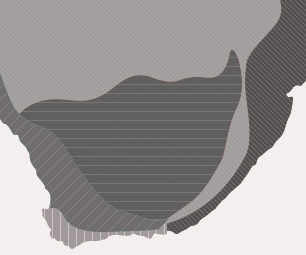
Pearsonia sessilifolia (Harv.) Dummer
Family:
Common names: silwerertjietee, vaalertjietee (Afr.)
Plant Attributes:
Plant Type:
SA Distribution:
Soil type:
Flowering season:
PH:
Flower colour:
Aspect:
Gardening skill:
Special Features:
Horticultural zones

Mundulea sericea (Willd.) A. Chev.
Family:
Common names: cork bush, silver bush, Rhodesian silver-leaf (Eng.); kurkbos, blou-ertjieboom, olifantshout, visboontjie, visgif, mangaanbos (Afr.); omukeka (Herero); !gaeb (Nama/Damara); mosetla-thlou (Northern Sotho); omumbaganyana (Oshiwambo); umSindandlovana (Swazi); ntsandzandlopfu, maibana, mohato, mosikatse, mosita-thlou, moswaatlou (Tswana); mukunda-ndou (Venda); umHlalantethe, umSindandlovu (Zulu)
SA Tree No: 226
Plant Attributes:
Plant Type:
SA Distribution:
Soil type:
Flowering season:
PH:
Flower colour:
Aspect:
Gardening skill:
Special Features:
Horticultural zones

Millettia stuhlmannii Taub.
Family:
Common names: panga panga, partridge wood (Eng.); panga-panga, patryshout (Afr.); muangaila (Venda); mpangapanga (Swahili)
SA Tree No: 228
Plant Attributes:
Plant Type:
SA Distribution:
Soil type:
Flowering season:
PH:
Flower colour:
Aspect:
Gardening skill:
Special Features:
Horticultural zones

Millettia grandis (E.Mey.) Skeels
Family:
Common names: umzimbeet (Eng.); umsambeet (Afr.); umSimbithwa (Zulu) umKunye (Xhosa)
SA Tree No: 227
Plant Attributes:
Plant Type:
SA Distribution:
Soil type:
Flowering season:
PH:
Flower colour:
Aspect:
Gardening skill:
Special Features:
Horticultural zones

Lotononis calycina (E.Mey.) Benth.
Family:
Common names: hairy Lotononis, namele (Sotho )
Plant Attributes:
Plant Type:
SA Distribution:
Soil type:
Flowering season:
PH:
Flower colour:
Aspect:
Gardening skill:
Special Features:
Horticultural zones

Liparia splendens (Burm.f.) Bos & De Wit subsp. splendens
Family:
Common names: mountain dahlia, orange nodding-head (Eng.), bergdahlia, geelkoppie, skaamblom (Afr.)
Plant Attributes:
Plant Type:
SA Distribution:
Soil type:
Flowering season:
PH:
Flower colour:
Aspect:
Gardening skill:
Special Features:
Horticultural zones

Liparia hirsuta Thunb.
Family:
Common names: common hard-leaved pea (Eng.); gewone hardeblaar-ertjie (Afr.)
Plant Attributes:
Plant Type:
SA Distribution:
Soil type:
Flowering season:
PH:
Flower colour:
Aspect:
Gardening skill:
Special Features:
Horticultural zones

Liparia angustifolia (Eckl. & Zeyh.) A.L.Schutte
Family:
Common names: none recorded
Plant Attributes:
Plant Type:
SA Distribution:
Soil type:
Flowering season:
PH:
Flower colour:
Aspect:
Gardening skill:
Special Features:
Horticultural zones

Lessertia DC.
Family:
Common names:
Species
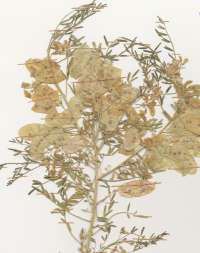
L. benguellensis
Perennial, non-climbing herb, 0.2-0.5 m tall. Leaves 65-130 mm long, divided into 5-9 pairs of leaflets, hairless, strap-shaped, pale-green, fleshy and squared off at the tip. The inflorescence is, 8-12-flowered. Inflorescence stalks 6-20 mm long. The fruit is a legume, 13-43 x 15-20 mm, oblong, hairless and 6-7-seeded. Diagnostic characters: the plant has a very short inflorescence stalk; the fruit is a broad, oblong legume, which at times becomes whitish, with long flower stalk. Distribution: occurs only in Namibia and Botswana. Flowering time: November to July.
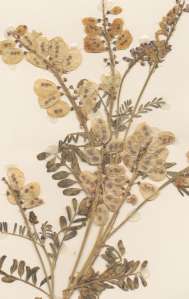
L. diffusa
Perennial, diffuse or procumbent, 0.05-0.45 m tall. The stems, leaf stalks, and inflorescence stalks covered with white, short, spreading hairs. Leaves 35-72 mm long, divided into 8-12 pairs of leaflets (often alternate) elliptic-oblong, rounded or emarginate, with white soft hairs on one or both sides. Inflorescence densely many-flowered, elongating, ± 20-flowered. Inflorescence stalks 45-85 mm long. Fruit is a legume 18-20 x 15-17 mm, subcompressed, hairless, elliptic-oblong or suborbicular (almost flat with a ± circular outline), both margins more or less rounded. Diagnostic characters: It is distinguished from L. excisa by an elongating, densely-flowered inflorescence and the elliptic-oblong or suborbicular legume. Distribution: in Northern and Western Cape. Flowering time: May and July to October.
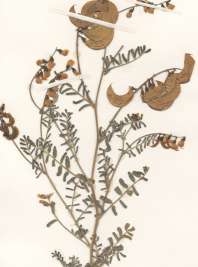
L. excisa
Perennial, diffuse or procumbent herb, 0.2-0.4 m tall. The stems, leaf stalks, and inflorescence stalks covered with white, short, spreading hairs. Leaves 40-80 mm long, leaflets, closely 8-12 pairs, (often alternate) triangular, emarginate, hairless above, sparse, white soft hairs beneath. Inflorescence loosely several or many-flowered, ± 20-flowered. Inflorescence stalks 40-85 mm long. Fruit is a legume 21-30 x 10-12 mm, compressed, hairless, half moon-shaped. Diagnostic characters: L. excisa can be distinguished from L. diffusa by its half moon-shaped legume, by its loosely flowered raceme and calyx slightly covered with black, soft, short hairs. Distribution: Northern and Western Cape. Flowering time: August to November.
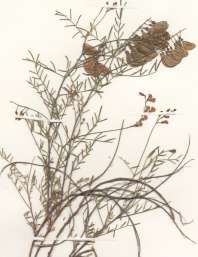
L. herbacea
Annual non-climbing herb, erect or ascending, 0.3-0.5 m long, with scattered, sharp-pointed, appressed (lying flat on the surface), straight and stiff hairs,. Leaves 55-95 mm, few and distant, 19-30 mm apart, divided into5-(7)-8 pairs of leaflets, often infolded, narrow-linear, rounded or with a shallow notch on a rounded apex, hairless above, with scattered, sharp-pointed, appressed, straight and stiff hairs beneath. Inflorescence stalks 61-92 mm, often much longer than the leaves. Inflorescence a loose raceme with many flowers, elongating, flowers purple. Fruit is a legume compressed, often veiny, 12-20 x 12-14 mm, hairless, shortly stipitate, obliquely ovoid-oblong, 2-6-seeded. Diagnostic characters: It can be distinguished from L. diffusa and L. excisa by hairiness, with scattered, sharp-pointed, appressed, straight and stiff hairs and the legume which is obliquely ovoid-oblong. Distribution: a Western Cape species, extending sparsely into the Northern and Eastern Cape.
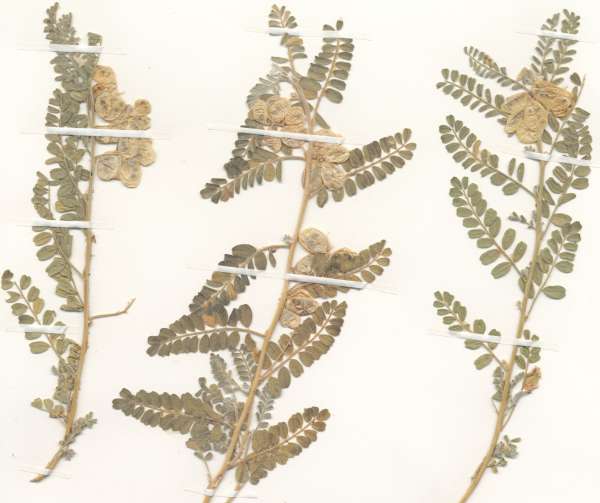
L. inflata
Perennial, non-climbing herb, 0.1 -0.5 m tall, diffuse or decumbent, with loose hairs. Leaves 35-50 mm long, divided into 8-10 pairs of leaflets, short, obovate or obcordate, with loose hairs beneath. Inflorescence loosely racemose, 5-8-flowered. Inflorescence stalks 12-28 mm shorter than the leaf. Fruit is a legume 15-18 x 11-14 mm, hairless, obliquely round, bladdery. Diagnostic characters: L. inflata is near to L. capitata but it can be differentiated by its short inflorescence stalks and bladdery, small, membranous, round legumes. Distribution: Northern, Western and Eastern Cape. Flowering time: January, April, June to July and September to October.
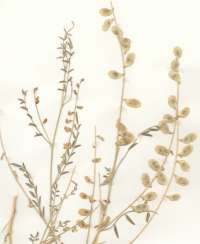
L. macrostachya
Perennial, non-climbing herb, 0.01-0.8 m tall. Leaves 33-100 mm long, divided into 3-10 pairs of leaflets, elliptic oblong, thinly silky on both sides, gradually smaller upwards. Inflorescence distantly many-flowered, 20-30 per inflorescence. Inflorescence stalks 30-62 mm long. Fruit is a legume 15-30 x 10-13 mm, elliptic-oblong, rounded at the ends, with a short stipe, hairy. Diagnostic characters: Oblong legume, thickly spotted with purple dots. Distribution: Namibia, Botswana and Northern Cape. Flowering time: January, February and November.
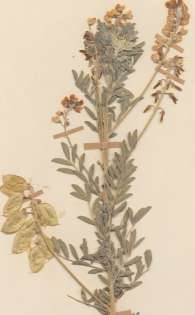
L. perennans
Perennial, non-climbing small bush, 0.1-1.6 m tall. Leaves 35-120 mm long, divided into 6-11 pairs of leaflets, ovate to slightly obovate or elliptic, apex rounded, base wedge-shaped, either both surfaces with sparse hairs or hairy on one surface. Inflorescence loosely racemose, 15-50-flowered. Inflorescence stalks 50-140 mm long. Fruit is a legume 11-20 x 6-11 mm, obliquely elliptic, sharply triangular at base, hairless. Diagnostic characters: L.perennans var. perennans can distinguished from L. stricta by its being hairy and silvery. Distribution: North-West, Mpumalanga, Free State, KwaZulu-Natal, Lesotho and Eastern Cape. Flowering time: September to February, April and May.
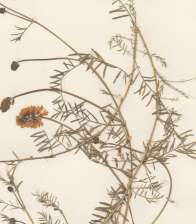
L. stenoloba
Perennial, non-climbing herb up to 0.3 m, erect or diffuse. Leaves 50-75 mm long, divided into 5-10 pairs of leaflets, linear-oblong or sublanceolate, variably hairy. Inflorescence shortly racemose at the summit 10-30-flowered. Inflorescence stalks 25-120 mm long, longer than the leaves. Fruit is a legume 46 x 9 mm, linear, obtuse, nearly straight, four times as long as broad, with scattered, sharp-pointed, appressed, straight and stiff hairs, many-seeded. Diagnostic characters: Distinguished from L. brachystachya by having long inflorescence stalks and short flower stalks. Distribution: Western and Eastern Cape, extends sparsely into Northern Cape. Flowering time: May, July to September and November to December.
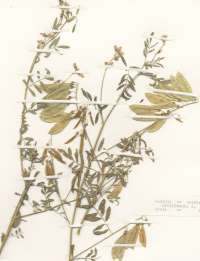
L. stricta
Perennial, non-climbing herb, 0.5-1 m high. Stem prominently ribbed, hairless. Leaves 40-75 mm long, divided into 4-8 pairs of leaflets, hairless, oblong-lanceolate. Inflorescence loosely racemose, 10-20-flowered. Inflorescence stalk 55-95 mm, much longer than the leaves. Fruit is a legume 20-30 x 8-11 mm, hairless, obliquely obovoid-oblong, slightly sickle-shaped. Diagnostic characters: Close to L. perennans, can be distinguished by its short and more apressed hairs; more loosely racemose flowers; larger and longer legumes with many seeds (8-10). Distribution: Northern Cape, North-West, Gauteng, Mpumalanga, Free State, KwaZulu-Natal and Lesotho. Flowering time: December to March.
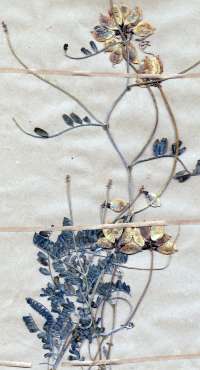
L. tomentosa
Perennial, diffuse or procumbent, 0.2-0.4 m tall. The stems, leaf stalks, and inflorescence stalks are covered with white, soft, short, spreading hairs. Leaves 50-60 mm long, divided into 8-12 pairs of leaflets, oblong, tapering gradually, rounded or notched at the tip, hairless above, with white soft hairs beneath. Inflorescence subcapitate, shortly 8-12-flowered. Inflorescence stalks 45-130 mm long, hairy. Fruit is a legume 10-20 x 8-13 mm, swollen, ovoid, with white hairs and a short stalk. Diagnostic characters: It is distinguished from L. capitata by a hairy legume. Distribution: Western Cape. Flowering time: January and from August to October.
Plant Attributes:
Plant Type:
SA Distribution:
Soil type:
Flowering season:
PH:
Flower colour:
Aspect:
Gardening skill:
Special Features:
Horticultural zones






Rate this article
Article well written and informative
Rate this plant
Is this an interesting plant?
Login to add your Comment
Back to topNot registered yet? Click here to register.